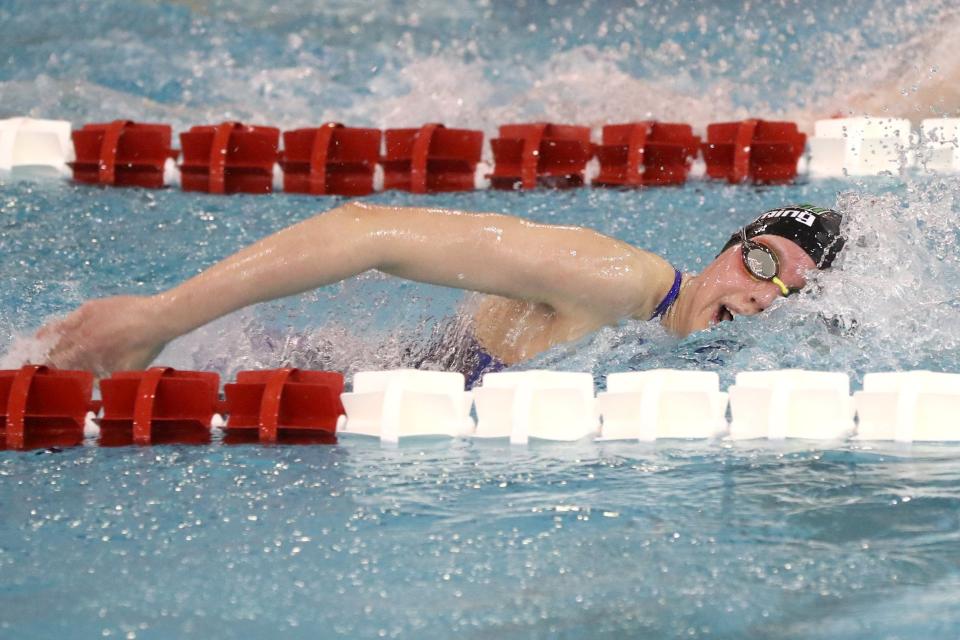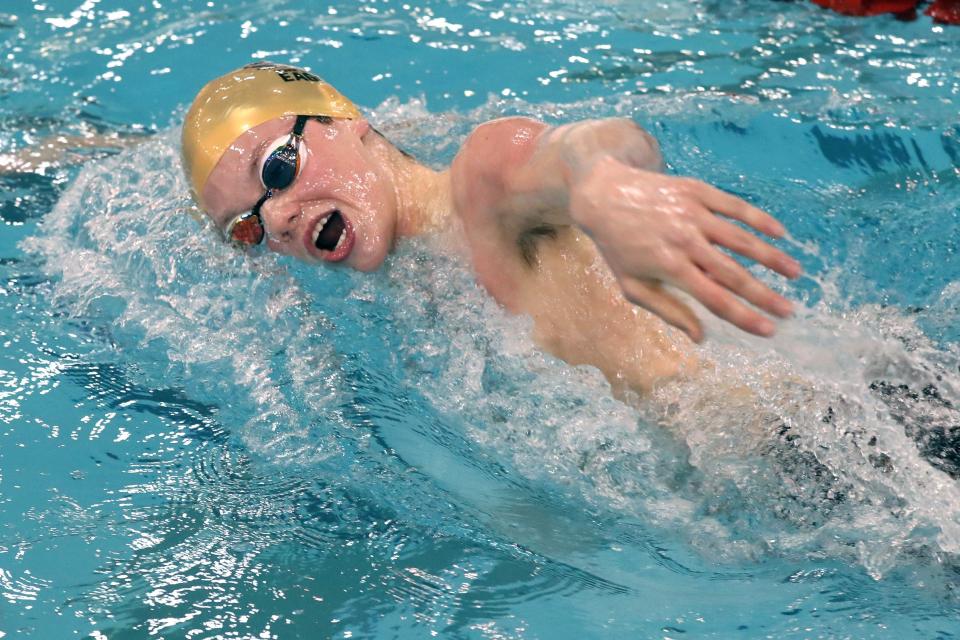'So many ways to be fast': Central Ohio swimmers, coaches mix approaches to tapering

This time of the season in high school swimming, “taper” is a word heard almost as much as “time” and “water.”
At its essence, tapering is the period leading up to a competition when swimmers lighten their workload to help their muscles recover with the aim of reaching their fastest times.
But little is simple about the process, which varies between both events and individual swimmers and also requires extra rest outside the pool.
“It’s science and a little bit of psychology and a little bit of art,” Upper Arlington girls coach John Sands said. “You have to work with your athletes and talk to your athletes, see what they’re feeling and what they need.”
High school sports newsletter: Get the latest news from The Dispatch in your inbox
With the postseason beginning this weekend, some swimmers who hope to peak at sectional meets began tapering as early as late January. Others with district and state championship aspirations launched their tapers last week, and at least one of the area’s top competitors won’t do so until the days leading up to state.
Even with the same athlete, what works one year might not be effective the next, whether because of continued physical growth or trial and error.
“Any coach who thinks they have it nailed down is fooling themselves," Dublin Coffman coach Mark Birnbrich said. “It can be a crapshoot. It’s impossible to think it’s a one-size-fits-all thing.”
For example, Birnbrich needs to look no further than his junior standout, Emily Brown. The two-time defending Division I state champion in both the 200-yard freestyle and 500 free insists on training full-bore until the week of state.
“I like having more longer sets under my belt,” said Brown, who committed to Tennessee in September. “I don’t start resting and bringing down my yardage until three or four days before state. That’s just my specialized taper. It’s taken me a few years to figure this out. I tried a schedule freshman year that I really liked and took it from there.”
By comparison, Watterson sophomore Jacob Rider, who finished 14th in the 500 free at last year’s Division II state meet, takes two weeks to taper.
“That includes trimming down the volume (of yards), but keeping the intensity at a high level,” Rider said. “During tapering, my coach (Dan Cherok) and I work on trying to perfect the little things within my races. This includes faster starts, faster turns, better underwaters and a smoother stroke.”
Athlete of the Week: Here's how to nominate a Columbus-area high school student

UA boys coach Mike de Bear likened the effect of season-long training, which for the Golden Bears and many other teams is at its most vigorous from December into mid-January, to pressing a spring.
“At some point when you let off, you go as high as you can,” said de Bear, who swam for Thomas Worthington (1993-97) and Syracuse (1997-2001). “The idea of hitting your taper perfectly isn’t a thing. If you do the work and trust the process, you will end up resting well when it matters.
Bears senior Joe Miller, a Miami University recruit who reached state in the 50 free and 100 free last year and helped the 200 free and 200 medley relays to third place in Division I, said the taper for UA’s sprinters lasts about three weeks. Distance swimmers taper for up to two weeks to maintain aerobic endurance.
“The first week, we lift lighter and we’re still in the water for an hour and 45 minutes,” Miller said. “The second week, it’s maybe an hour. By the third week, we’re down to 1,000 to 1,500 yards a day and we’re only in the pool for 30 minutes.
“It can be weird. There are ups and downs. You have to relax and trust the process.”
With so much on the line, Grandview Heights coach Susan Ferguson added stress reduction to her team’s training regimen a few years ago.
“We started weekly yoga over winter break and added it to the weeks leading into taper week with excellent feedback,” Ferguson said. “They enjoy yoga for sore muscles and mental relaxation. Stress reduction is super important during a long season.”
Three Division I and two Division II sectionals will take place Friday, Saturday and Sunday. The winner of each sectional event advances to next week’s district meets, and the field is rounded out by at-large competitors based on time.
The Division II district meet is Feb. 16 at Ohio State, followed two days later by Division I.
State swimming and diving is Feb. 21-25 at Branin Natatorium in Canton.
“At the end of the day, it’s getting your kids to know that what we do works,” de Bear said. “The big thing for me is the variety of ways to taper. There are so many ways to be fast.”
This article originally appeared on The Columbus Dispatch: Ohio high school swimming: Diving into process of tapering
